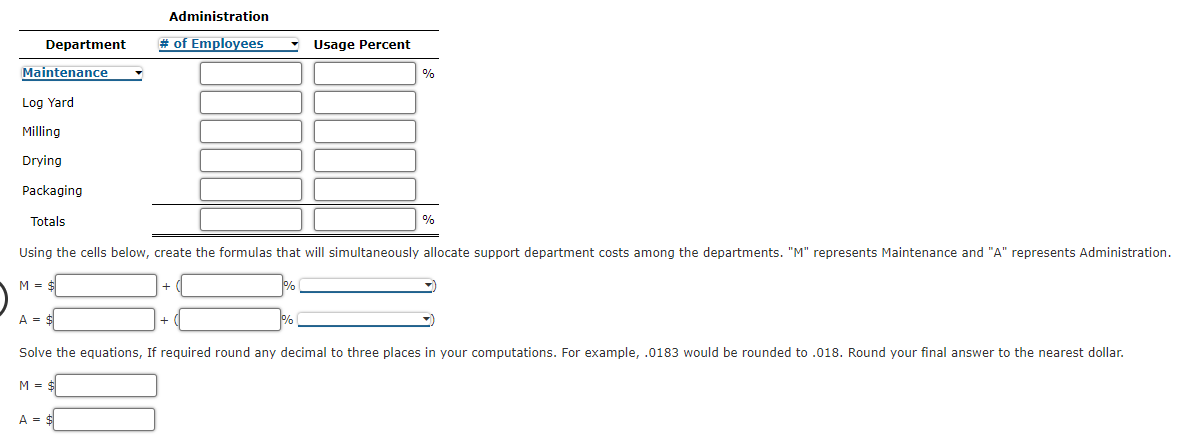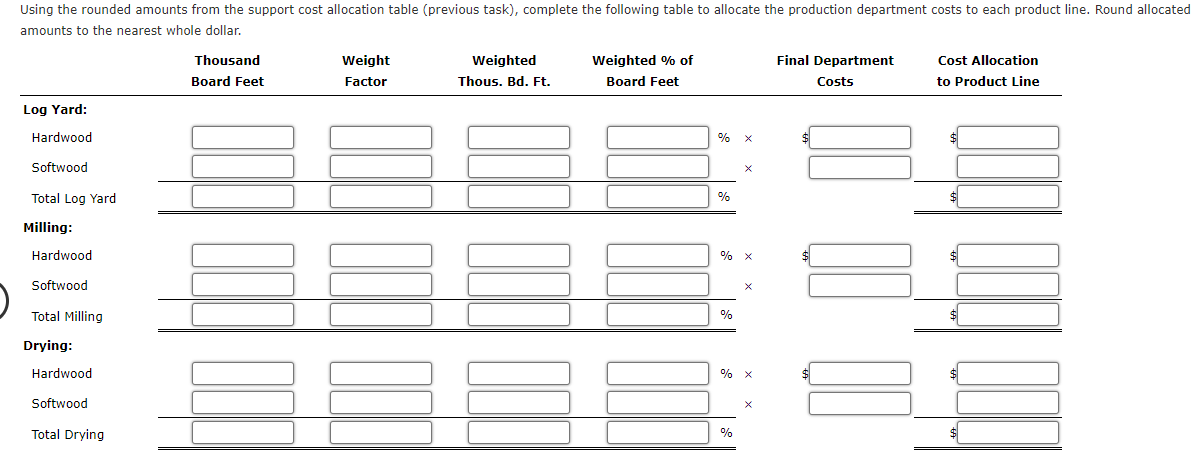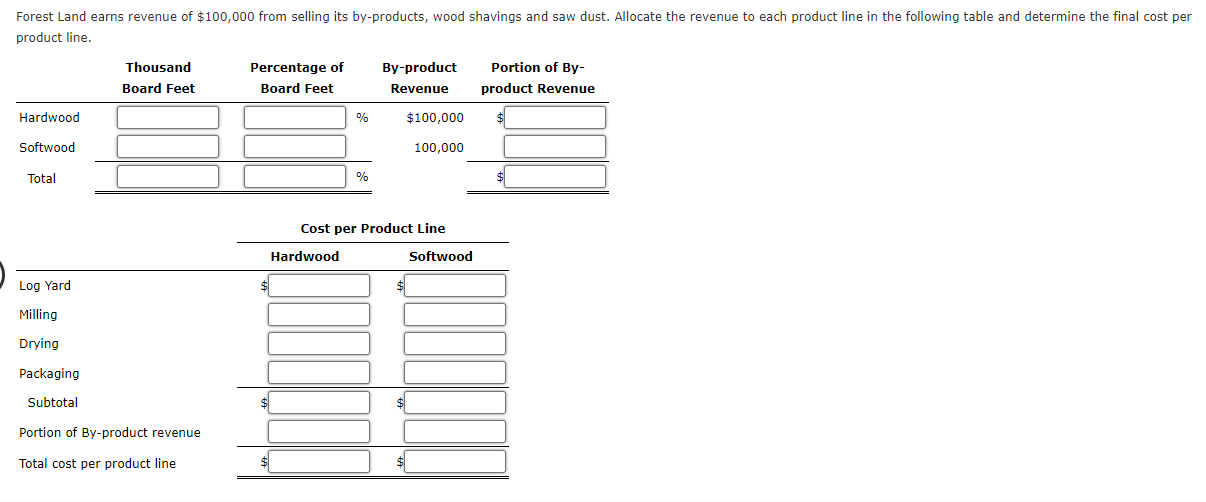






percentage of thousand board feet produced by the product line. possible and has instructed you to use the reciprocal services method. She reminds you that revenue from by-products are used to offset costs. per thousand board feet. resources, and information technology. The cost driver for the administration department is number of employees. In your first step, you determine the costs traced to each department and the usage of the support department cost drivers. You have created the following table: \begin{tabular}{lrrrrrrr} & Maintenance & Administration & Log Yard & Milling & Drying & Packaging \\ \hline Hours worked & 11,000 & 9,720 & 8,100 & 25,920 & 16,200 & 21,060 \\ Number of employees & 6 & 4 & 4 & 12 & 8 & 10 \\ Department costs & $176,000 & $216,275 & $309,940 & $747,000 & $433,160 & $224,000 \end{tabular} Your next step is to determine the proportional usage of each support department's cost driver by the other departments to which its costs are to be allocated. Complete the following tables. \begin{tabular}{lc} \multicolumn{1}{c}{ Maintenance } \\ \multicolumn{1}{c}{ Department } & Hours Worked \\ \hline Administration \\ Log Yard \\ Milling \\ Drying \\ Packaging \\ Totals \end{tabular} M=$A=$+(+(l%% M=$ A=$ Use the following table to allocate the support cost departments. Round allocated amounts to the nearest whole dollar. If an amount is zero, enter "0". \begin{tabular}{ll} & \multicolumn{2}{c}{ Support Departments } \\ \cline { 2 - 3 } & Maintenance \end{tabular} amounts to the nearest whole dollar. ThousandLogYard:HardwoodSoftwoodTotalLogYardWeightBoardFeetWactor Milling: Hardwood Drying: Hardwood Softwood Packaging: product line. product line. percentage of thousand board feet produced by the product line. possible and has instructed you to use the reciprocal services method. She reminds you that revenue from by-products are used to offset costs. per thousand board feet. resources, and information technology. The cost driver for the administration department is number of employees. In your first step, you determine the costs traced to each department and the usage of the support department cost drivers. You have created the following table: \begin{tabular}{lrrrrrrr} & Maintenance & Administration & Log Yard & Milling & Drying & Packaging \\ \hline Hours worked & 11,000 & 9,720 & 8,100 & 25,920 & 16,200 & 21,060 \\ Number of employees & 6 & 4 & 4 & 12 & 8 & 10 \\ Department costs & $176,000 & $216,275 & $309,940 & $747,000 & $433,160 & $224,000 \end{tabular} Your next step is to determine the proportional usage of each support department's cost driver by the other departments to which its costs are to be allocated. Complete the following tables. \begin{tabular}{lc} \multicolumn{1}{c}{ Maintenance } \\ \multicolumn{1}{c}{ Department } & Hours Worked \\ \hline Administration \\ Log Yard \\ Milling \\ Drying \\ Packaging \\ Totals \end{tabular} M=$A=$+(+(l%% M=$ A=$ Use the following table to allocate the support cost departments. Round allocated amounts to the nearest whole dollar. If an amount is zero, enter "0". \begin{tabular}{ll} & \multicolumn{2}{c}{ Support Departments } \\ \cline { 2 - 3 } & Maintenance \end{tabular} amounts to the nearest whole dollar. ThousandLogYard:HardwoodSoftwoodTotalLogYardWeightBoardFeetWactor Milling: Hardwood Drying: Hardwood Softwood Packaging: product line. product line













